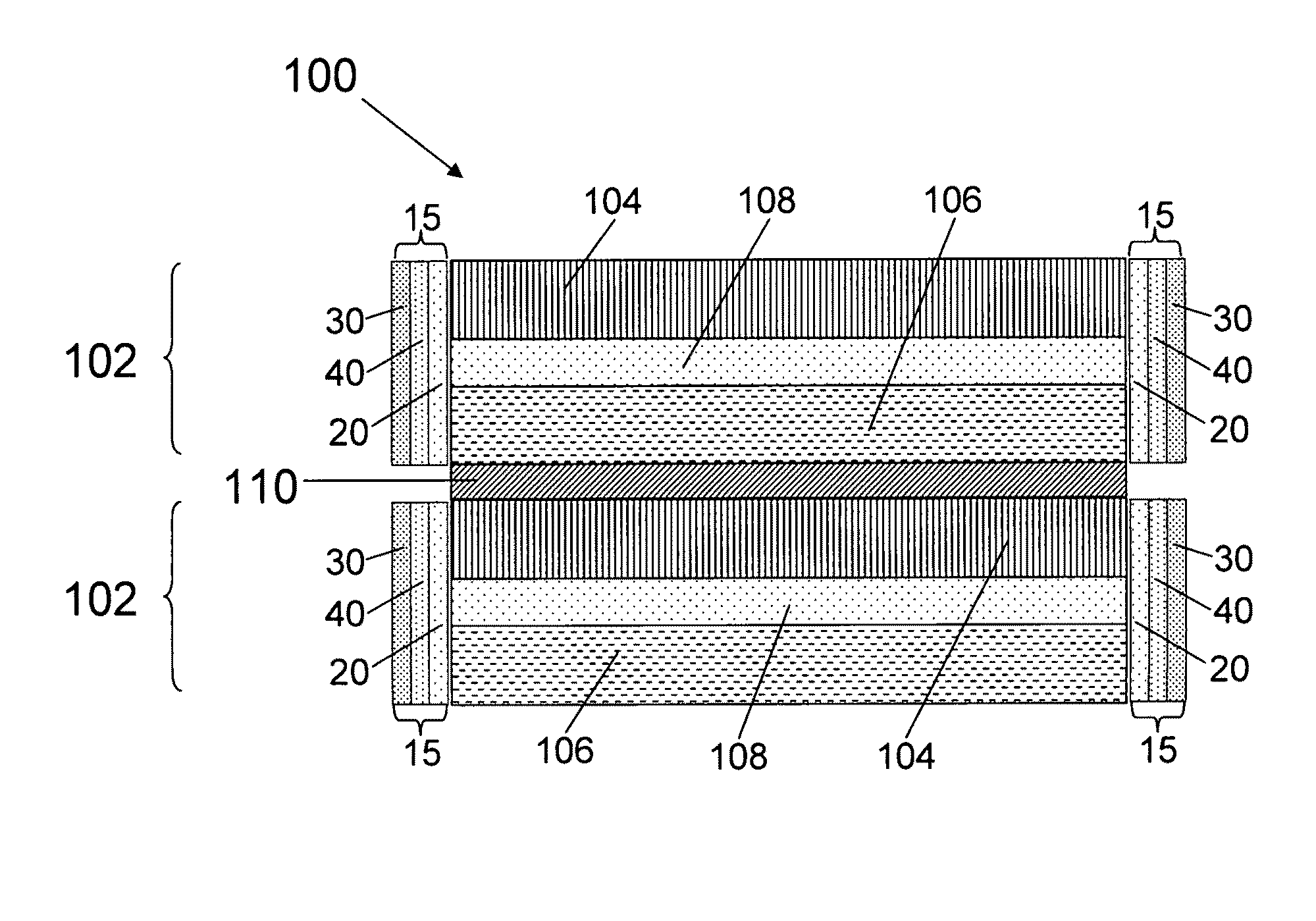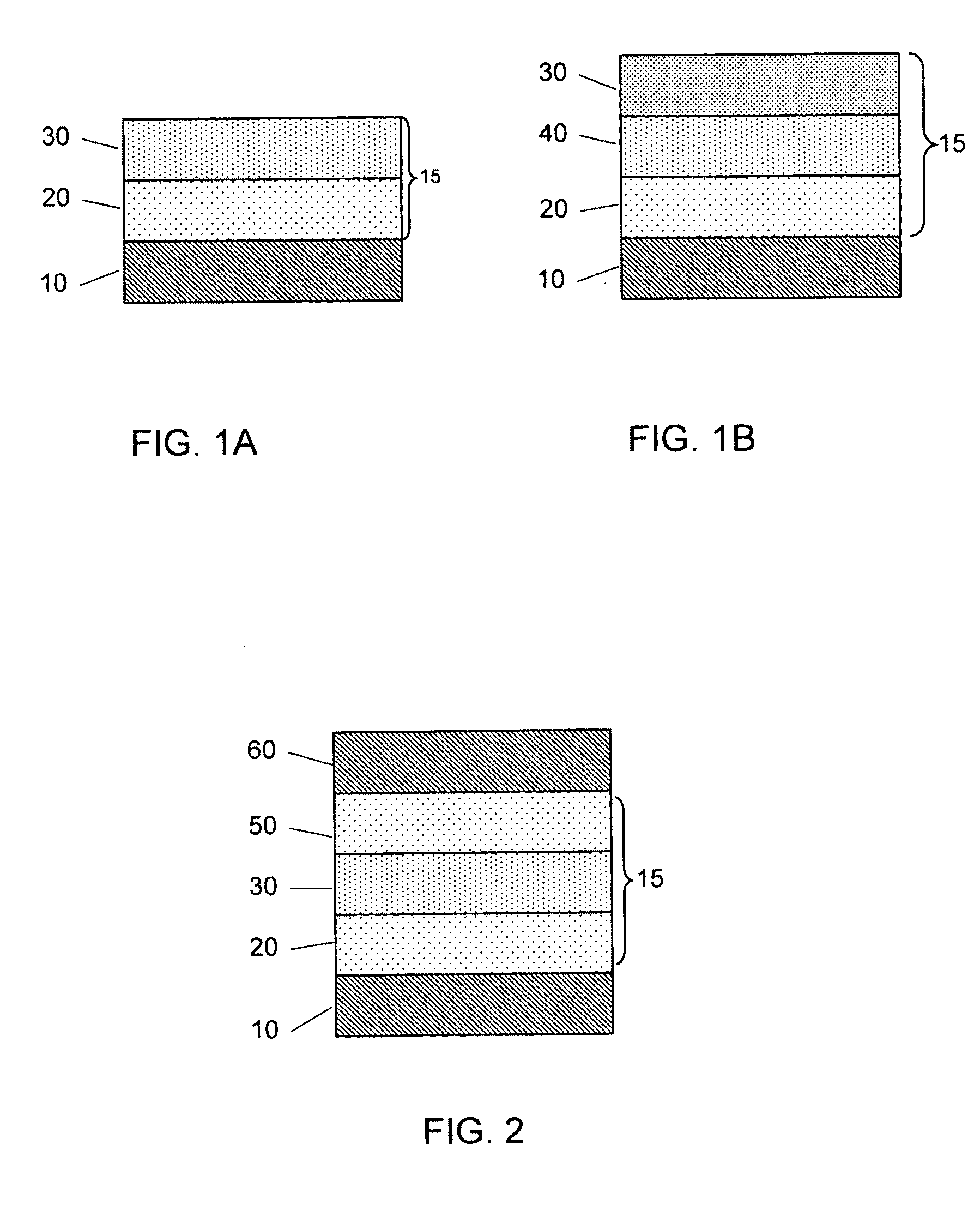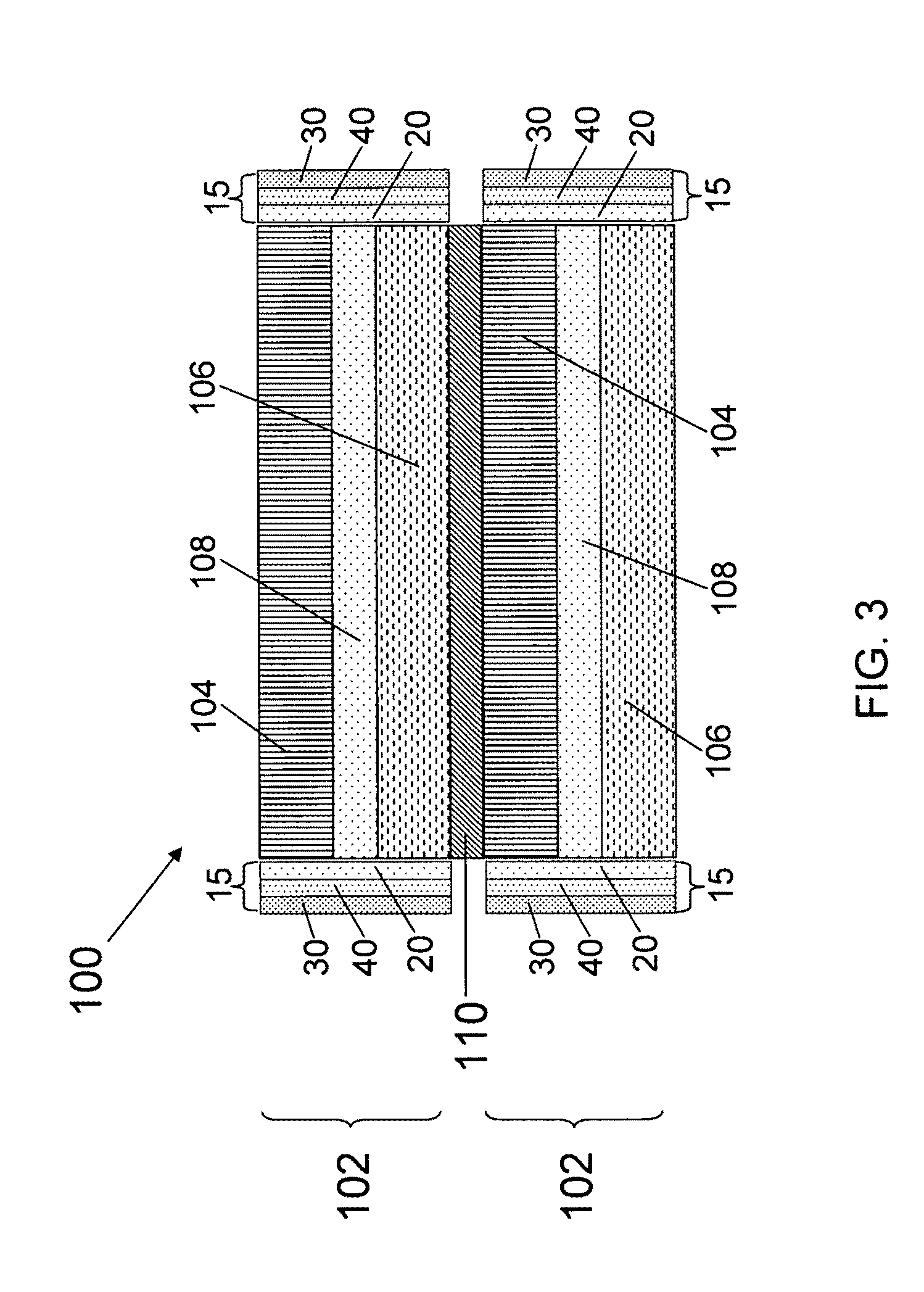Multilayer glass-ceramic seals for fuel cells
a fuel cell and glass-ceramic technology, applied in the direction of cell components, final product manufacturing, sustainable manufacturing/processing, etc., can solve the problems of glass materials that are generally not chemically stable, glass materials that tend to crystallize and lose their flexibility, and ceramic materials that are generally not compliant at the elevated temperatures of normal operation of sofcs, etc., to achieve high flexibility, low mechanical, chemical and/or thermo-physical stability, the effect of high flexibility
- Summary
- Abstract
- Description
- Claims
- Application Information
AI Technical Summary
Benefits of technology
Problems solved by technology
Method used
Image
Examples
Embodiment Construction
[0021]The foregoing will be apparent from the following more particular description of example embodiments of the invention, as illustrated in the accompanying drawings in which like reference characters refer to the same parts throughout the different views. The drawings are not necessarily to scale, emphasis instead being placed upon illustrating embodiments of the present invention.
[0022]A sealing component employed in the invention includes a plurality of glass-ceramic layers. Generally, the sealing component includes a glass-ceramic layer having the highest glass phase content (i.e., the lowest ceramic phase content) close to a ceramic component to be sealed, and a glass-ceramic layer having the lowest glass phase content (i.e., the highest ceramic phase content) distal from the ceramic component, generating a gradient of glass phase content (or a gradient of ceramic phase content). The term “glass phase,” as used herein, has the meaning commonly afforded the term in the art, f...
PUM
| Property | Measurement | Unit |
|---|---|---|
| temperatures | aaaaa | aaaaa |
| temperature | aaaaa | aaaaa |
| temperature | aaaaa | aaaaa |
Abstract
Description
Claims
Application Information
 Login to View More
Login to View More - R&D
- Intellectual Property
- Life Sciences
- Materials
- Tech Scout
- Unparalleled Data Quality
- Higher Quality Content
- 60% Fewer Hallucinations
Browse by: Latest US Patents, China's latest patents, Technical Efficacy Thesaurus, Application Domain, Technology Topic, Popular Technical Reports.
© 2025 PatSnap. All rights reserved.Legal|Privacy policy|Modern Slavery Act Transparency Statement|Sitemap|About US| Contact US: help@patsnap.com



